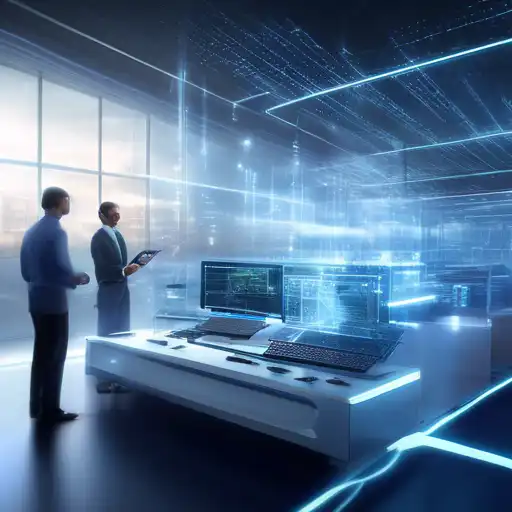Introduction to Edge Computing
In the digital age, speed and efficiency are paramount. Edge computing emerges as a groundbreaking technology that processes data closer to the source, significantly reducing latency and bandwidth use. This article delves into how edge computing is transforming data processing and why it's becoming an indispensable part of modern technology infrastructures.
What is Edge Computing?
Edge computing refers to the practice of processing data near the edge of your network, where the data is being generated, instead of relying on a central data-processing warehouse. This means faster insights, improved response times, and better bandwidth availability.
Benefits of Edge Computing
The advantages of edge computing are vast and varied, including:
- Reduced Latency: By processing data closer to its source, edge computing minimizes the delay in data transmission.
- Bandwidth Savings: Local data processing reduces the amount of data that needs to be sent to the cloud, saving bandwidth.
- Enhanced Security: Distributing processing can reduce the risk of data breaches by limiting the exposure of sensitive data.
- Improved Reliability: Edge computing can operate independently of the cloud, ensuring continuous operation even if connectivity is lost.
Edge Computing vs. Cloud Computing
While both edge and cloud computing play pivotal roles in data processing, they serve different purposes. Cloud computing is about centralized data processing and storage, whereas edge computing focuses on decentralized processing at the data's source. Together, they form a cohesive ecosystem that supports the growing demands of IoT devices and real-time applications.
Real-World Applications of Edge Computing
Edge computing is revolutionizing industries by enabling real-time data processing. Some notable applications include:
- Smart Cities: Traffic management systems use edge computing to process data from sensors and cameras in real-time, improving traffic flow and safety.
- Healthcare: Wearable devices monitor patients' health metrics on the spot, allowing for immediate alerts and responses.
- Manufacturing: Edge computing facilitates predictive maintenance by analyzing equipment data on the factory floor, preventing downtime.
- Retail: Personalized shopping experiences are created by processing customer data locally in stores.
Challenges and Considerations
Despite its benefits, edge computing comes with its set of challenges, such as the need for robust security measures at each edge location and the complexity of managing distributed systems. However, with continuous advancements in technology, these challenges are being addressed, paving the way for wider adoption.
The Future of Edge Computing
As the Internet of Things (IoT) continues to expand, the demand for edge computing is expected to grow exponentially. With its ability to provide faster, more efficient data processing, edge computing is set to play a critical role in the development of smart technologies and autonomous systems.
In conclusion, edge computing represents a significant leap forward in how we process and manage data. By bringing computation closer to the data source, it offers unparalleled speed and efficiency, making it a key component of the future digital landscape.
